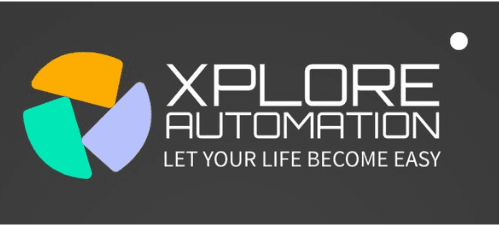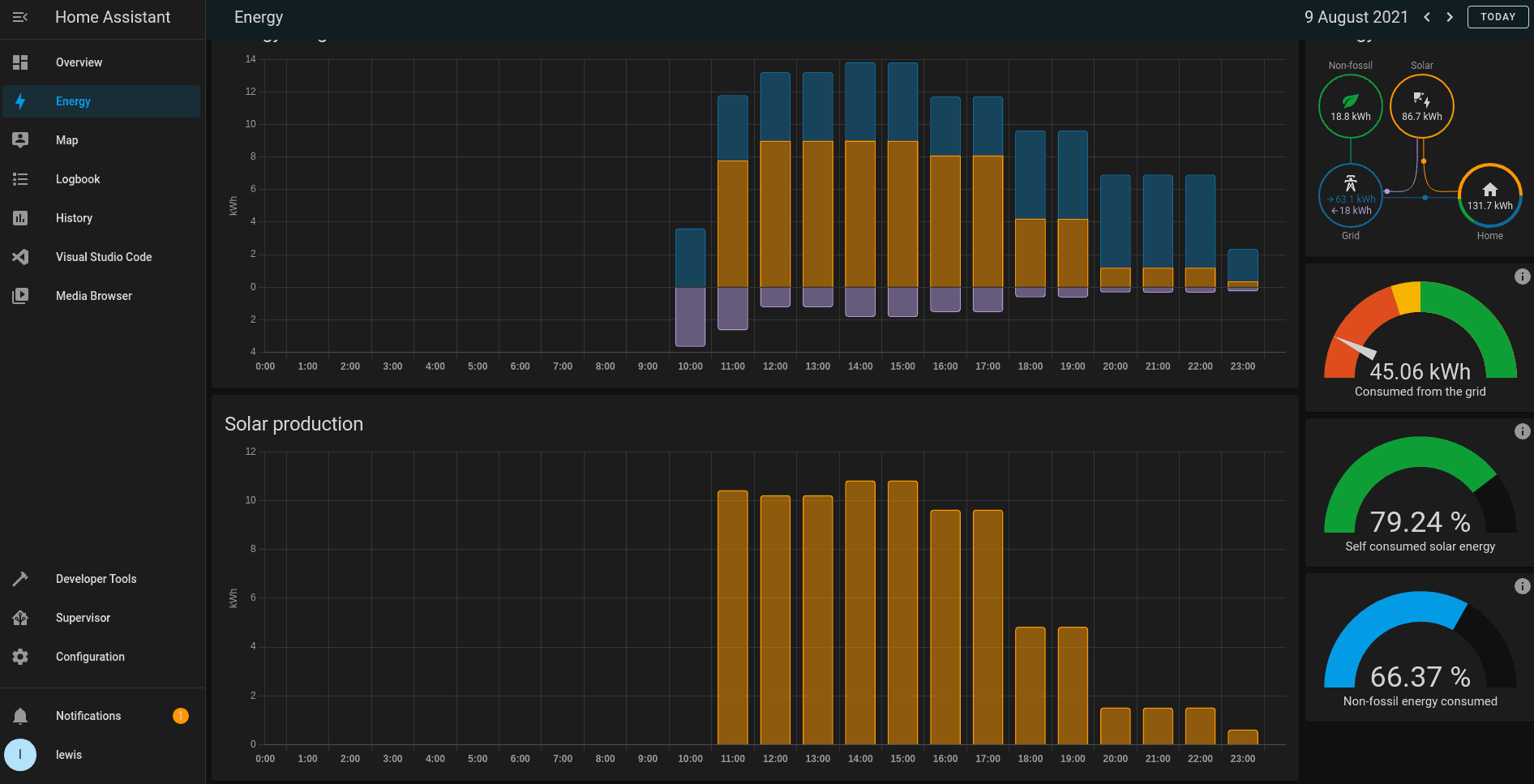Looking for Home Assistant dashboard ideas? Discover creative and functional ways to customize your smart home system.
From weather widgets to energy consumption graphs, the possibilities are endless. Whether you want to monitor security cameras or control smart devices, a well-designed dashboard can enhance your home automation experience. The key is to find a balance between aesthetics and practicality, ensuring that the dashboard complements your lifestyle while providing useful insights and functionality.
We’ll explore a variety of innovative ideas to inspire your own Home Assistant dashboard design. Whether you’re a tech enthusiast or just getting started with smart home automation, these ideas will help you make the most of your Home Assistant setup.
1. Home Assistant Dashboard Basics
1.1 Getting Started With Home Assistant
If you’re new to Home Assistant, getting started can feel overwhelming. But fear not, it’s easier than you think. Firstly, you’ll need to install Home Assistant on a compatible device, such as a Raspberry Pi or a dedicated server. Once installed, you can begin adding your smart devices to the platform and configuring them to work together. The process may seem daunting at first, but there are plenty of resources and online communities available to guide you through the setup.
1.2 Understanding The Importance Of A Dashboard
A dashboard is the heart of your Home Assistant setup. It’s where you’ll interact with and control all your smart devices, view data from sensors, and monitor home automation processes. By presenting your data and controls in a centralized and user-friendly interface, a dashboard simplifies the management of your smart home. Whether you want to adjust the thermostat, check security camera feeds, or receive alerts from your sensors, having a dashboard at your fingertips makes the process seamless and convenient.
2. Customizing Your Home Assistant Dashboard
The beauty of having a Home Assistant dashboard lies in the ability to customize it according to your specific needs and preferences. This allows you to tailor the dashboard to display the information that is most valuable to you, creating a truly personalized and efficient smart home platform. In this section, we will explore various ways to customize your Home Assistant dashboard to maximize its functionality and usability.
2.1 Choosing The Right Themes
When customizing your Home Assistant dashboard, one of the first decisions you’ll need to make is selecting the right theme. Themes not only define the visual appearance of your dashboard but also contribute to its overall user experience. Whether you prefer a sleek, modern look or a more traditional aesthetic, choosing a theme that resonates with your style can greatly enhance your enjoyment of the dashboard.
2.2 Adding Widgets For Real-time Monitoring
To take full advantage of your Home Assistant dashboard, consider incorporating widgets that provide real-time monitoring of key aspects of your smart home. These widgets can display information such as current temperature, energy usage, security system status, and more. By adding widgets focused on real-time data, you can stay informed and in control of your home’s various systems, right from the dashboard.
2.3 Organizing And Customizing Layouts
Efficiently organizing and customizing the layouts of your Home Assistant dashboard is crucial for maximizing its usability. Consider grouping related widgets together, creating sections for specific areas of your home, or arranging widgets based on their priority and frequency of use. This level of organization can streamline your interaction with the dashboard, making it easier to access the information and controls you need.
3. Advanced Features And Integrations
Your Home Assistant dashboard is about to get even more powerful with advanced features and integrations that will take your smart home experience to the next level.
3.1 Implementing Voice Control With Virtual Assistants
Add voice control to your Home Assistant dashboard and take your smart home automation to a whole new level of convenience. By integrating virtual assistants like Amazon Echo or Google Home, you can control your smart devices simply by speaking commands like “Turn off the lights” or “Set the thermostat to 72 degrees.”
To implement voice control, start by connecting your virtual assistant device to your Home Assistant dashboard. Ensure that all your smart devices are linked and recognized by the virtual assistant. Once connected, you can use natural language voice commands to control and manage your smart home devices with ease.
3.2 Integrating Smart Cameras And Video Streaming
Enhance the security and surveillance capabilities of your Home Assistant dashboard by integrating smart cameras and video streaming. With this integration, you can view live video feed from your smart cameras directly on your dashboard.
To integrate smart cameras, first make sure that your cameras are compatible with Home Assistant. Connect your cameras to your dashboard using the appropriate platform integration or plugins. Once set up, your dashboard will display live feeds from the cameras, allowing you to monitor your home and surroundings in real-time, anytime.
3.3 Creating Automation And Scenes
Take full advantage of Home Assistant’s automation capabilities by creating custom automation and scenes. Automation allows you to set up triggers and actions that happen automatically based on predefined conditions. For example, you can create an automation that turns on the lights when you enter a room.
In addition to automation, scenes enable you to create different combinations of settings for multiple devices. By creating scenes, you can easily set the mood or environment with just a single tap on your Home Assistant dashboard. For instance, you can create a “movie night” scene that turns off the lights, lowers the blinds, and starts playing your favorite movie.
To create automation and scenes, use Home Assistant’s intuitive interface or YAML configuration and specify the conditions and actions you want for each automation or scene. With a few simple steps, you can create a fully automated and customizable smart home experience.
4. Security And Privacy Considerations
Ensuring security and privacy are crucial considerations when designing home assistant dashboards. Protecting personal data and implementing strong security measures are essential to maintaining a safe and secure user experience.
When it comes to setting up your Home Assistant dashboard, it’s important to consider the security and privacy aspects. Protecting your dashboard from unauthorized access and safeguarding your data and privacy are essential for a worry-free home automation experience. In this section, we’ll explore some best practices to help you ensure the security and privacy of your Home Assistant dashboard.
4.1 Protecting Your Home Assistant Dashboard from Unauthorized Access
To prevent unauthorized access to your Home Assistant dashboard, you need to implement the necessary security measures. One of the first steps is to set up a strong username and password for your Home Assistant login. Avoid using common or easily guessable combinations and consider using a password manager to generate and store unique passwords for added security.
Additionally, you can enable two-factor authentication (2FA) for your Home Assistant dashboard. With 2FA, you’ll need to provide a second piece of information, such as a code from your mobile device, in addition to your username and password. This provides an extra layer of protection against unauthorized access, even if your login credentials are compromised.
Another way to protect your dashboard is by restricting access to it from outside your home network. By configuring your router to only allow connections from specific IP addresses or setting up a virtual private network (VPN), you can limit access to your Home Assistant dashboard to trusted devices and networks.
4.2 Safeguarding Your Data and Privacy
In addition to protecting your dashboard from unauthorized access, it’s essential to safeguard your data and privacy. Home Assistant provides options to encrypt the communication between your devices and the dashboard using SSL/TLS certificates. Setting up SSL/TLS ensures that the data transmitted between your devices and the dashboard is secure and cannot be intercepted by potential attackers.
Moreover, it’s important to regularly update your Home Assistant software to the latest version. Software updates often include security patches and bug fixes that address vulnerabilities, keeping your dashboard secure against potential threats.
If you have remote access to your Home Assistant dashboard, ensure that the connection is secure. Using a VPN when accessing your dashboard remotely adds an additional layer of protection, preventing attackers from eavesdropping on your connection and gaining unauthorized access to your home automation system.
Lastly, carefully review and manage the integrations and plugins you use with Home Assistant. Ensure that they come from reputable sources and regularly update them to maintain their security and compatibility with the latest Home Assistant versions.
By following these security and privacy considerations, you can enjoy your Home Assistant dashboard with peace of mind, knowing that your data and privacy are protected. Implementing these best practices will help create a secure and reliable home automation environment.
5. Inspiring Home Assistant Dashboard Ideas
When it comes to creating an efficient and user-friendly smart home, having a well-designed dashboard is essential. The Home Assistant platform offers a wide range of customization options for creating personalized dashboards that cater to your specific needs. In this article, we will explore 5 inspiring Home Assistant dashboard ideas that will take your smart home to the next level.
5.1 Home Monitoring And Security Command Center
Every homeowner should place a high premium on keeping their house safe and secure. With Home Assistant, you can create a dedicated command center for monitoring and controlling all aspects of your home security system. This dashboard provides a comprehensive view of your security cameras, door/window sensors, motion detectors, and other devices. You can easily arm/disarm your security system, view live camera feeds, and receive real-time alerts all in one place.
5.2 Energy Usage And Efficiency Tracking
Monitoring energy consumption and maximizing efficiency is not only environmentally friendly but also cost-effective. With Home Assistant, you can create a dashboard that displays real-time energy usage data from smart plugs, smart thermostats, and other energy monitoring devices. This allows you to track your energy consumption, identify energy-hungry appliances, and make informed decisions on how to reduce your carbon footprint and save on utility bills.
5.3 Media And Entertainment Control Center
Transform your smart home into the ultimate media and entertainment hub with a dedicated control center. With Home Assistant, you can create a dashboard that integrates all your media devices, such as smart TVs, media players, and streaming services. This dashboard allows you to control the volume, switch between different media sources, and even create custom scenes for a seamless entertainment experience. Whether you want to watch a movie, play music, or stream your favorite TV show, everything is just a tap away.

Credit: www.youtube.com

Credit: community.home-assistant.io
Frequently Asked Questions On Home Assistant Dashboard Ideas
What Is A Home Assistant Dashboard?
A Home Assistant Dashboard is a user-friendly interface that allows you to control and monitor different aspects of your smart home. It provides a centralized platform where you can manage devices, create automations, and view real-time data.
How Can I Create A Home Assistant Dashboard?
To create a Home Assistant Dashboard, you can use platforms like Lovelace UI or HADashboard. These platforms provide customizable templates and widgets that you can use to design your dashboard according to your preferences. You can add cards for devices, sensors, cameras, weather, and more.
What Are Some Home Assistant Dashboard Ideas?
There are endless possibilities for Home Assistant Dashboard ideas. Some popular ideas include creating a dashboard for energy monitoring, security and surveillance, weather information, media control, and home automation controls. You can customize your dashboard with different cards and layouts to suit your needs and preferences.
How Do I Integrate Third-party Services Into My Home Assistant Dashboard?
Integrating third-party services into your Home Assistant Dashboard is possible through the use of integrations and plugins. You can find a wide range of integrations available in the Home Assistant community, allowing you to connect services like Google Assistant, Amazon Alexa, SmartThings, and more.
Conclusion
To sum up, these home assistant dashboard ideas provide a range of possibilities for creating a personalized and efficient smart home experience. By incorporating various widgets and integrations, users can easily control their devices, monitor their home’s overall performance, and even enhance security measures.
Whether it’s simplifying daily routines or adding a touch of convenience, these dashboards offer endless opportunities to transform your home into a smart sanctuary. So, start exploring and tailor your dashboard to suit your needs!

I am a technology writer and blogger with 17 years of experience in the fields of information technology, artificial intelligence, cyber security, automated systems, and the latest technology trends.

